Sit & Make: Experiments

As I mentioned in my last post, I am not as familiar with Grasshopper as I would like to be, so I took some time to explore different ways of using it to create forms. My focus was how I could convert a series of points into a variety of shapes. I started with reference geometries including surfaces and point cloud and experimented with how I can convert them into exciting yet aesthetic forms. Below are some of my studies.
Delaunay Edges
The delauny edge component performs a Delauny Triangulation operation across a set of points. In essence, it interconnects the points while ensuring that lines don’t intersect each other and minimizes sharp angles across the structure. I used a point cloud that derived points from the structure of a basic chair. As you can see, the overall shape resembles a chair, but the lines do not follow the structural components of a traditional chair. This experiment showed me how I can keep an overall form while “randomizing” the internal topology.
Custom Mesh
With the custom mesh experiment, I was trying to convert a point cloud into a coherent surface. For each point, I found the closest two points and drew a triangle between the three points. I had expected the surface to be more knitted than it was. There were many holes where the points would not connect and the mesh intersected itself in numerous locations. Resolving the holes and the intersections proved to be a more difficult challenge than I was willing to take on during the experimentation.
Lofts
My previous two experiments resulted in very geometric and angular forms. I wanted to try and create shapes from points that were more organic and free flowing. I divided the point cloud into 10 different sections across the x axis then created curves from each of the 10 sets. Finally, I lofted the 10 curves to create a single shape. The end result was a complex and abstract form. If I am to use this technique moving forward, I will have to organize the points so that the curves do not overlap and intersect.
Softened Delaunay Mesh
Building on the first experiment, I used the delauny mesh component to create a network of surfaces between the points. The initial surface was jagged and angular, similar to the edges produced by the delauny edges component. However, since it was a mesh surface, I was able to smooth it out using weaverbird’s catmull-clark sub-division component. This significantly changed the form and created a more aesthetically promising design with plenty of surface variation. Overall a very promising result.
Surface Mapping
Textures are important in defining a chair’s and character and I wanted to experiment with how I could parametrically apply them to the chair design. I came across the box mapping component, which allows you to apply a shape across any surface. It works by offsetting a surface and then subdividing it, resulting in many smaller, interconnected shapes that are topologically identical to a cube. You can then create a form and use its bounding box to map it onto the surface. Above, the small cube on the left is mapped onto the larger surface on the right. You can see how the features of the cube shrink and stretch as the surface changes size and curvature. The only downside with this technique was how slow it was when it was applied to complex geometry.
Box Chair
Previously, all my experiments have been very abstract so I decided to switch gears and create a very literal, explicitly defined chair. Each sensor was mapped to a different parameter. For example, the accelerometer value controlled how many legs the chair has while the flex sensors controlled the width and depth of the seat. This method created a strong correlation between the user’s sitting position and the final output of the chair. It also took Sit & Make away from its original intent of creating a dynamic system that would result in unexpected designs. The box chair felt very prescriptive and was not the direction I was looking to take.
Physical Forces
Kangaroo allows you to simulate physical forces on geometry in real-time. You can simulate gravity, rubberized materials, particle systems, springs etc. and I wanted to see if there was a way to create forms using physical forces influenced by sensor values. In the above example, I created a surface and applied various spring and load forces to it from different sides, resulting in geometry that was stretched in parts and crumpled in others. This is just scratching the surface of what kangaroo is capable of and I see potential in using Kangaroo to simulate a complex interaction of forces, resulting in a beautiful, unexpected form.
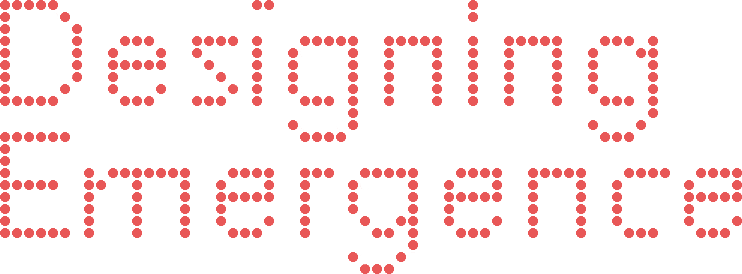
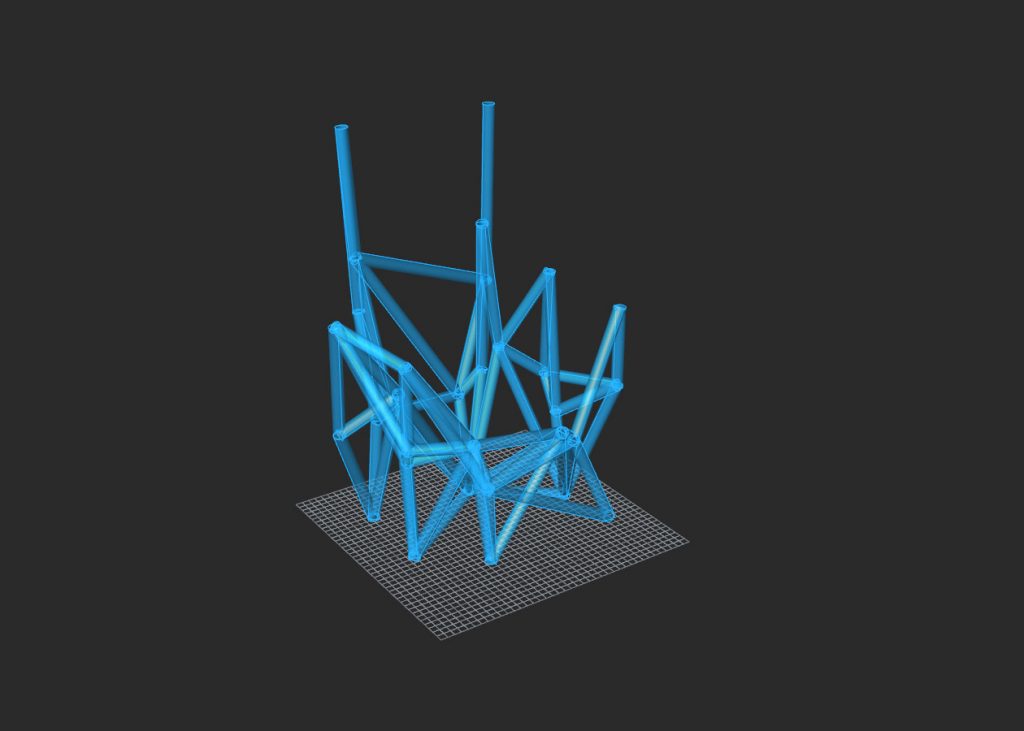
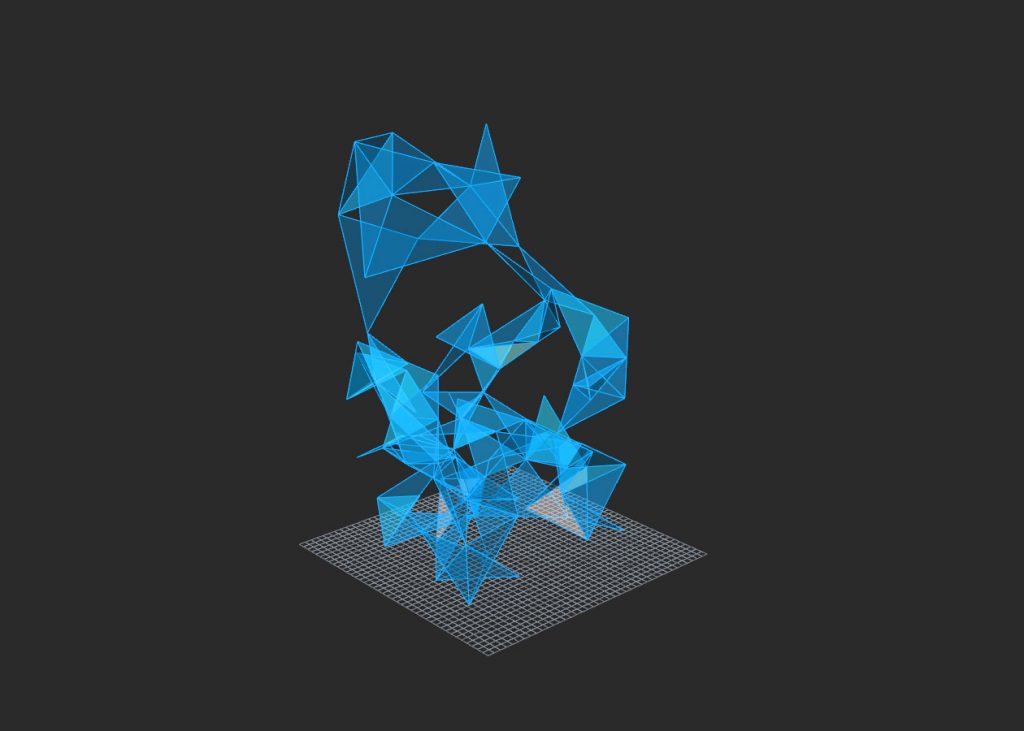
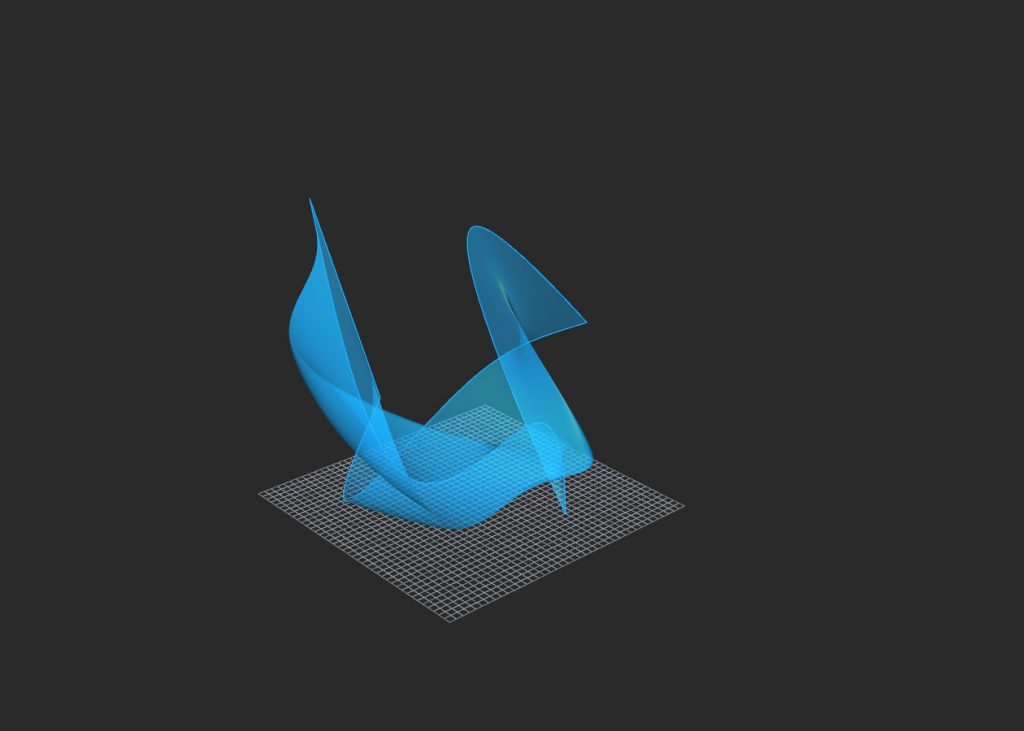
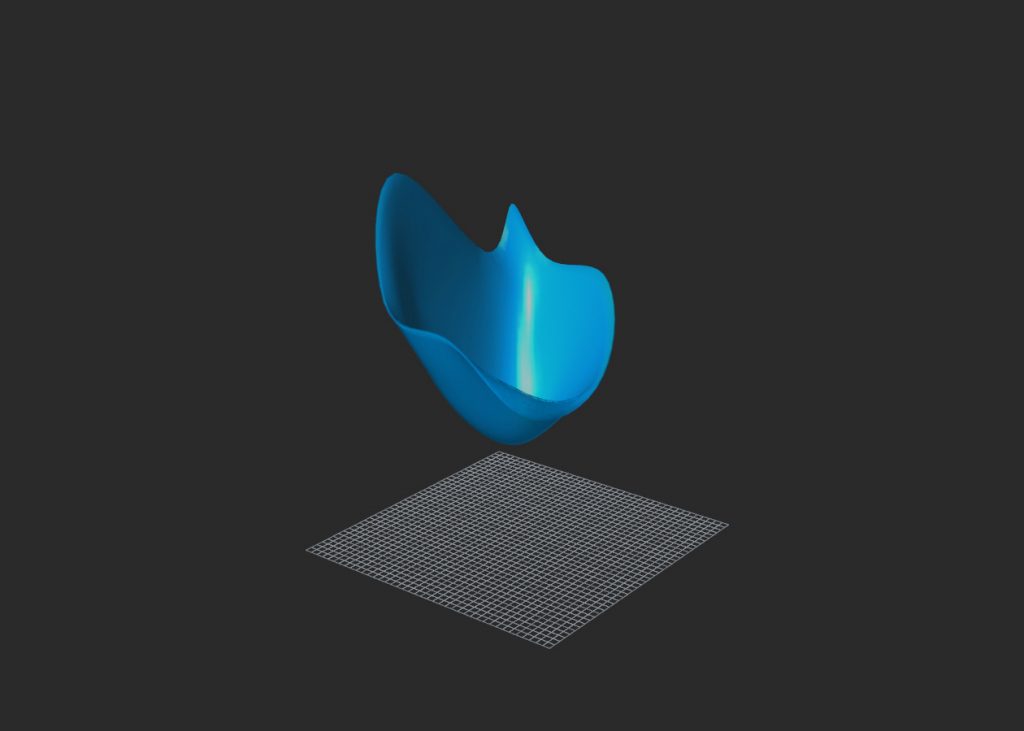
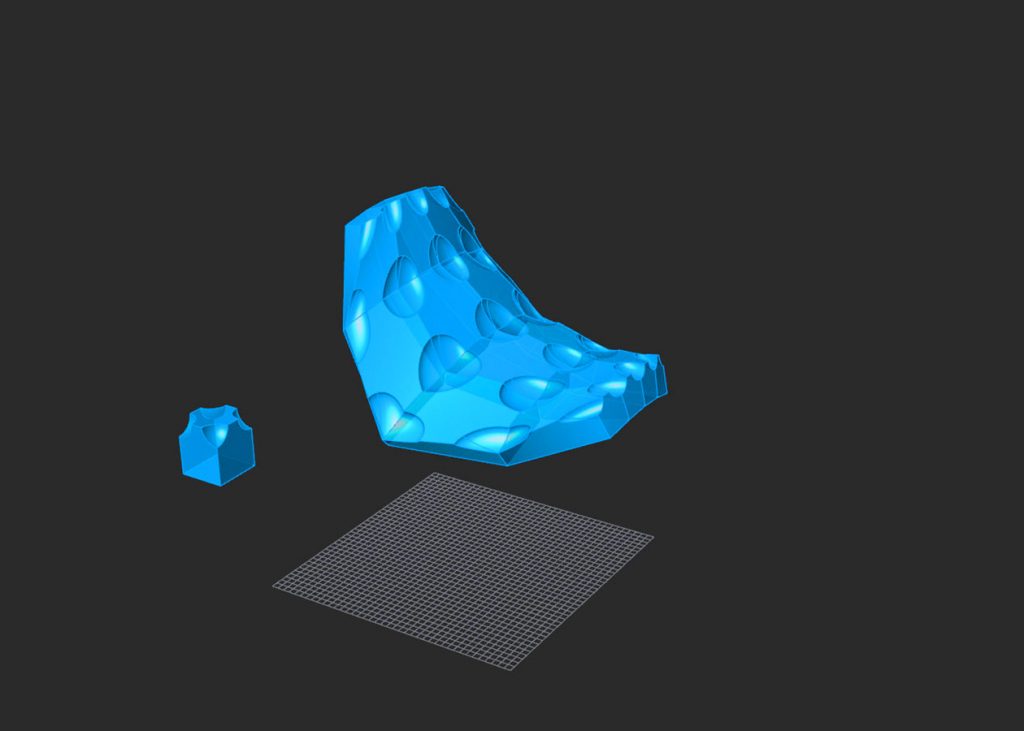
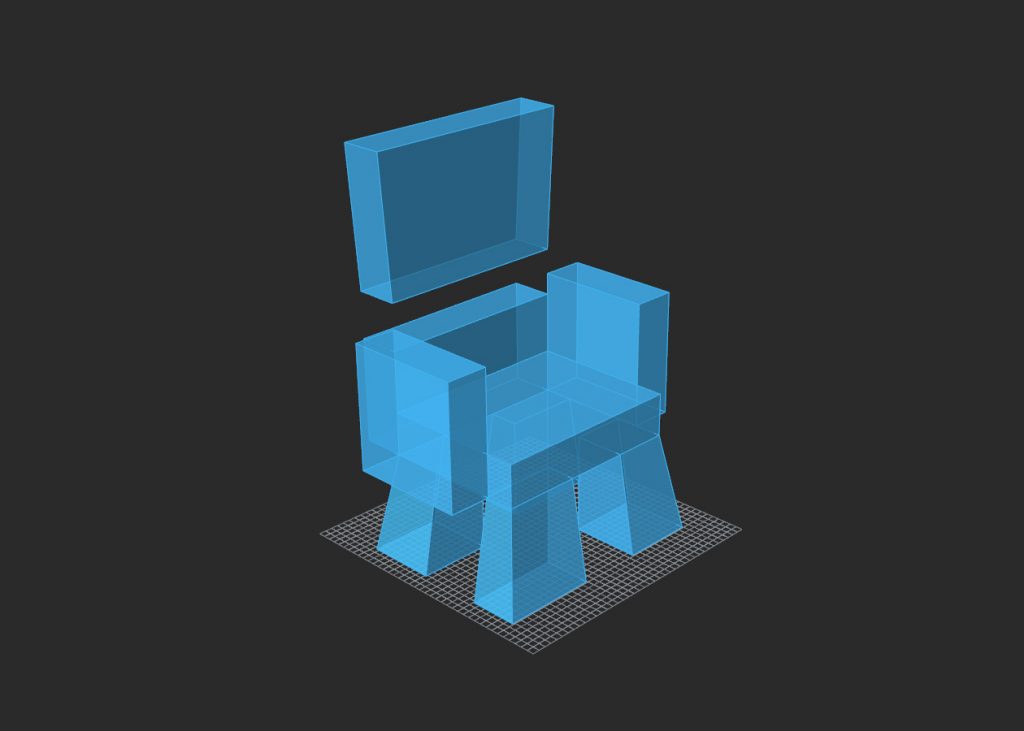
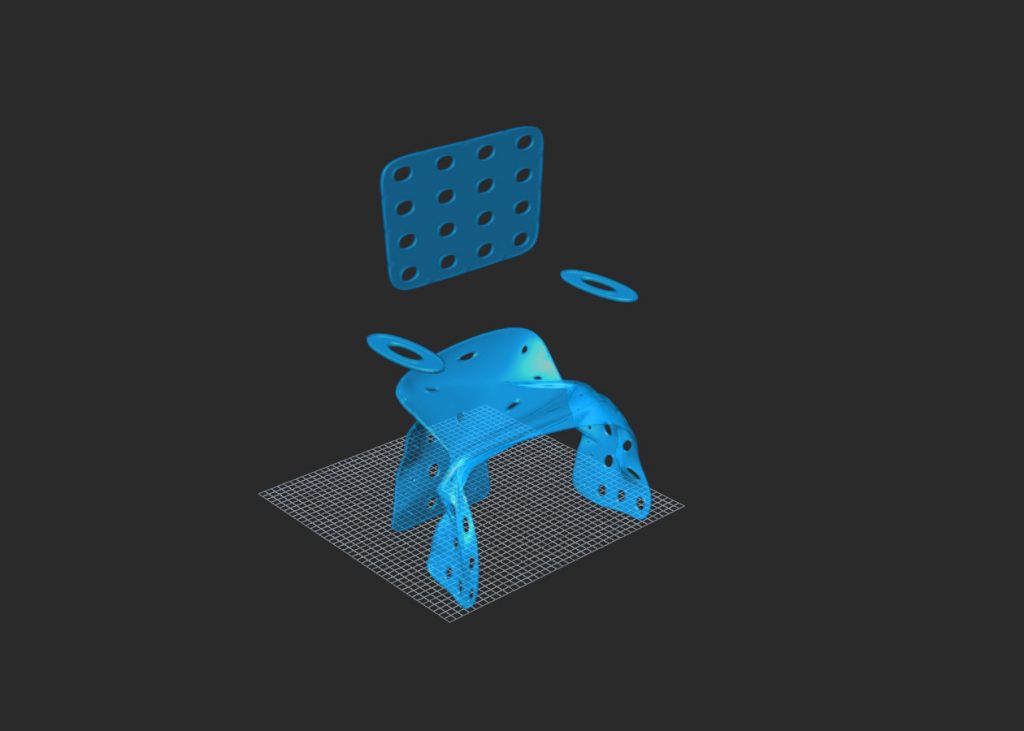
Leave a Reply